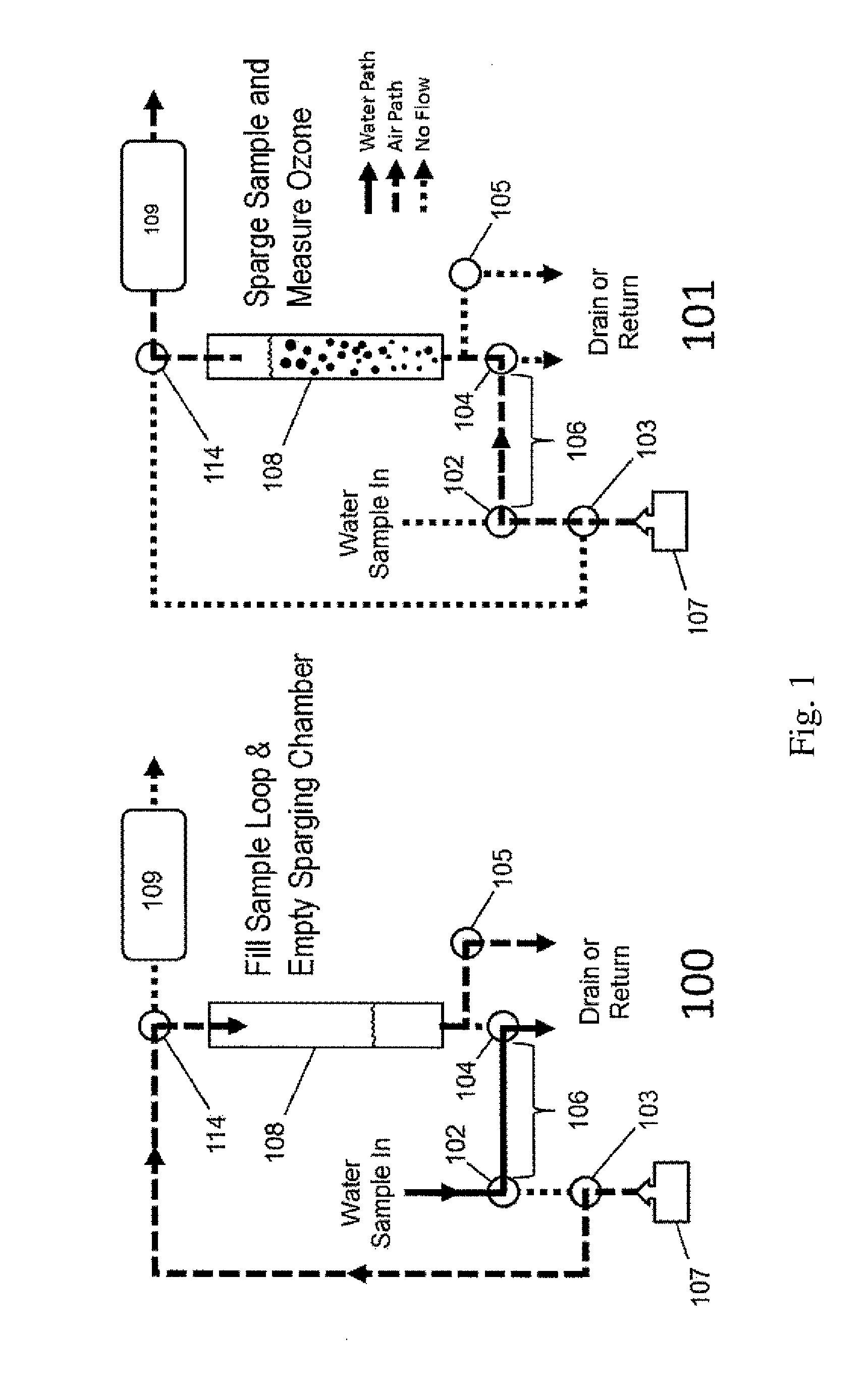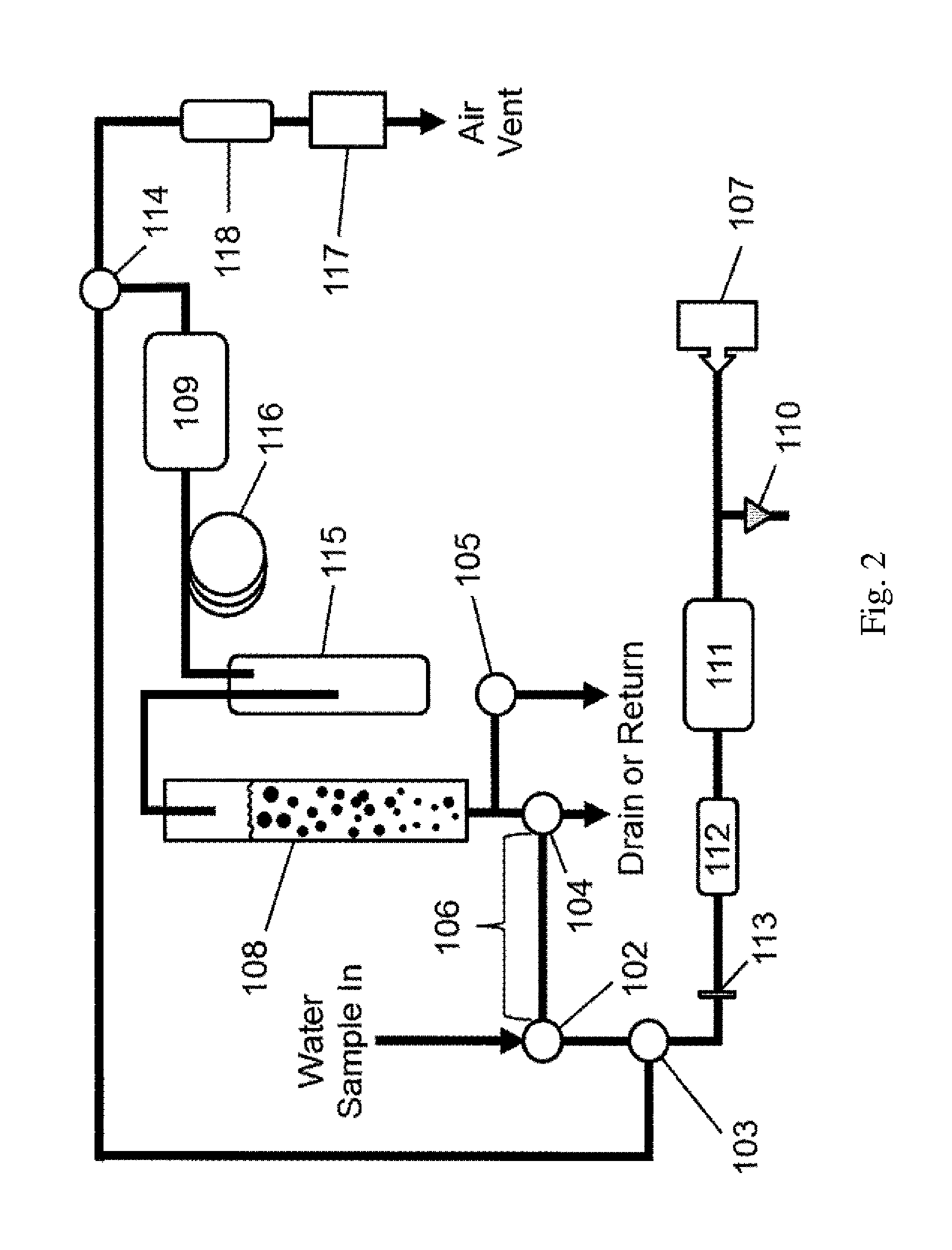Aqueous ozone monitor utilizing gas stripping
a technology of ozone monitor and gas stripping, which is applied in the direction of water/sewage treatment by oxidation, water treatment parameter control, instruments, etc., can solve the problems of cumbersome method, difficult to measure dissolved ozone in all but high purity water, and inability to meet the requirements of high purity water treatment, etc., to eliminate the reliance on method and eliminate errors
- Summary
- Abstract
- Description
- Claims
- Application Information
AI Technical Summary
Benefits of technology
Problems solved by technology
Method used
Image
Examples
example
[0037]Dissolved ozone in water was produced in an apparatus manufactured by Ozone Solutions, Inc. (Hull, Iowa) by continuous injection of ozone produced by corona discharge in oxygen into a circulating stream of water. Water was continuously sampled from the pressurized apparatus though a BMT (BMT Messtechnik GmbH, Berlin, Germany) Model 964-AQ-R1 dissolved ozone sensor, which is based on UV absorbance within water, and into a Model UV-106-W Aqueous Ozone Monitor, which is an embodiment of the present invention, described by FIG. 2. Dissolved ozone concentrations for the Model UV-106-W Aqueous Ozone Monitor were calculated in the firmware in real time based on the measured sample loop volume, air flow rate and ozone concentration profiles obtained during the 5-s sparging cycles as discussed earlier. The followed calibration equation was applied to the raw data to produce the final result:
Ccorrected=0.963[Cmeasured−0.056]
The ozone concentration was varied in the range of ˜0.0-8.2 ppm...
PUM
| Property | Measurement | Unit |
|---|---|---|
| sparging time | aaaaa | aaaaa |
| weight | aaaaa | aaaaa |
| volume | aaaaa | aaaaa |
Abstract
Description
Claims
Application Information
 Login to View More
Login to View More - R&D
- Intellectual Property
- Life Sciences
- Materials
- Tech Scout
- Unparalleled Data Quality
- Higher Quality Content
- 60% Fewer Hallucinations
Browse by: Latest US Patents, China's latest patents, Technical Efficacy Thesaurus, Application Domain, Technology Topic, Popular Technical Reports.
© 2025 PatSnap. All rights reserved.Legal|Privacy policy|Modern Slavery Act Transparency Statement|Sitemap|About US| Contact US: help@patsnap.com



